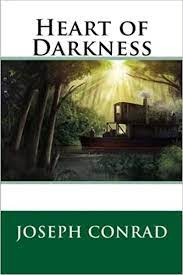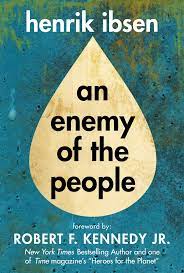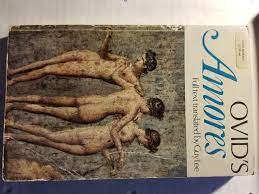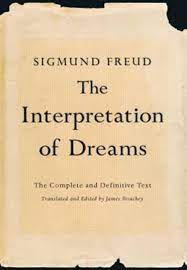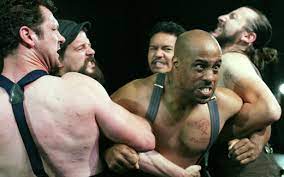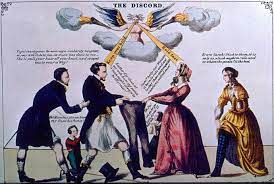Want help to write your Essay or Assignments? Click here
‘Racist or not?’: Heart of Darkness a study of Joseph Conrad.
Joseph Conrad occupies an important position in English literature. He is credited as being “one of the greatest novelists in the English language” which is no small feat for any writer but a particularly striking one for someone who learned English in his adult years. Conrad was born Jozef Teador Konrad Nalecz Korzeniowski in Russian-occupied Ukraine to Polish parents in the year 1857. He led an active life with roughly twenty years of naval adventures. In 1878, he arrived in England and began to learn the native language. He was twenty-one.
Conrad’s literary career was as adventurous as his life. He produced fourteen novels and eight volumes of stories. His impact on literature-in-English was nothing short of revolutionary and his influence is particularly apparent in American fiction. In the immediate post-World War I landscape, critical giants (including FR Leavis and Thomas C. Moore) took an active interest in analysing Conrad’s works. In the 1930s renewed American curiosity about the author led to many well-written biographical records being published.
Conrad’s fiction revolves around his own experiences. Fascinated by Africa as a young boy, he would grow up to work for an imperial company. This would take him on many journeys to “the dark continent” and leave him with a disillusionment of colonisation.
Want help to write your Essay or Assignments? Click here
After prompting celebratory reverence for more than half a century, Conrad’s fiction is now facing sharp criticism. A lot of this revolves around race. The world looks different in the twenty-first (and twentieth) century than it did in the nineteenth. Writers from once-colonised nations have integrated themselves into the academic and artistic world of English literature, and have found Conrad’s depictions of Africans (and others) to be intellectually lazy, filled with Orientalist stereotyping and employing a rhetoric that justifies colonisation.
Forefront amongst these are: African author and critic Chinua Achebe and Palestinian-born intellectual Edward Said. The former has famously called Joseph Conrad “a thoroughgoing racist”.
So, was Joseph Conrad – story-teller extraordinaire and firm part of the English canon – nothing more than a racist, included in the company of great English writers simply because he was lucky enough to be born a white man at an age where you could recycle stereotypical descriptions of Africans to no-end and still be given credit? Or is he simply a victim of literary-theory, that oppressive force that many celebrated critics feel has taken over English classrooms and turned them into battlegrounds of political correctness?
Want help to write your Essay or Assignments? Click here
To decide, many point – as this essay will – to Conrad’s famous novella Heart of Darkness.
Published in 1899, the premise of the short story is simple: On the deck of a ship docked on River Thames, a man named Marlow recounts his previous adventure as the captain of a river-boat that travelled up the River Congo. Marlow was the employee of an imperial company specialising in ivory trade in Africa. His mission was to rescue Kurtz, the evasive station captain stranded somewhere in the depths of Congo.
Conrad was different from his contemporaries in that he offers an apparently scathing critique of imperial domination right from the start of the novella. Unlike many, he does not posit colonial rule as of benefit to the natives and highlights white cruelty at (almost) every turn.
Marlow points out that his predecessor Fresleven once beat the chief of an African tribe with a stick over a dispute involving some hens. When a fire breaks out at the company’s central station a black man is punished; he is beaten bloody at the mere suspicion of playing a part in the destruction and afforded no trial.
A line of slaves joined with chains hanging from their necks is paraded around the station, and Marlow’s companion is eager to “kill somebody” as punishment for the black men (who are forced to carry him everywhere) deserting them. Even Kurtz – who is a part of the company’s newly recruited “gang of virtue” – scribbles “Exterminate all the brutes!” in a moment of carelessness as a jarring postscript on his (ironically titled) pamphlet for the ‘Suppression of Savage Customs’.
If the white people are cruel – the black people are oppressed, and Conrad makes sure to show this repeatedly. The hungry slaves deserted after they had fulfilled their usefulness are “black shadows of disease and starvation.” Black heads on stakes decorate Kurtz’s house, a reminder that even the best view natives as easily disposable.
On the river-boat, Marlow’s white crew members throw a slab of smelly hippo meat overboard, their olfactory sensibilities overriding a major concern: what will the black-crew eat? This is of little consequence to the Europeans and (strikingly) Marlow recounts this instance with a good deal of sarcasm, commenting that the useless brass wire paid in place of the meat “was paid with a regularity worth of a large and honourable trading company.”
Want help to write your Essay or Assignments? Click here
This is to Conrad’s credit. He does not seem to fully subscribe to the mission civilisatrice (‘civilising mission’) that maintained that the white man had a duty to go forth and westernise all non-Europeans for their own benefit. This was a powerful rhetorical position in the nineteenth century, and this novella offers contemptuous commentary in this regard: Marlow encounters a man paid by the company for the upkeep of roads and points out that neither roads nor upkeep was to be seen unless the body of a black man lying in the middle of the path with a bullet hole through his head “could be considered a permanent improvement.”
When he first arrives in Congo, Marlow encounters the senseless digging of a hole which seems to have no purpose other than a “philanthropic desire” to give the natives work. When Marlow’s aunt elaborates on the goodness of colonisers spreading culture and Christianity to savages, he replies: “The Company is run for profit.”
These – and other – instances show that Conrad was ahead of his time, at least to a certain extent.
Shouldn’t this be enough to exonerate him?
Achebe doesn’t think so.
In 1975, he delivered a lecture titled ‘An Image of Africa: Racism in Conrad’s Heart of Darkness’. In it, he outlines why he indicts Joseph Conrad.
Want help to write your Essay or Assignments? Click here
For one thing, Conrad sees Africa as little more than a foil to Europe. If Europe is cultured, civilized and advanced, then Africa is (all words used to describe Congo in Heart of Darkness:)savage, barbaric and primitive. A place “where man’s vaunted intelligence and refinement are finally mocked by triumphant bestiality,” Achebe writes. This is problematic because it sees Africa only in terms of not-being-Europe, and not as a real place with its own spatiotemporal context.
This means that the author is so blinded by his prejudices that he deliberately misses out on achievements by Africans. As Achebe points out, the tribe of Fang people lived near were the novella is set. European travellers inspired by their bronze-art would introduce cubism to 20th century Britain around the time of Conrad’s writing. But you wouldn’t guess from that from reading this novella. Conrad spares no adjective in describing how hopelessly childlike, incapable of progress and primitive Africans are.
That they could create something worthwhile is unimaginable. Essentially what Achebe points out is that Conrad’s works are ‘Orientalist’ – a tricky word that basically means that European domination in Africa, Indochina and the Near East was accompanied by representations that insisted that black and brown people were incapable of progress and so justified colonial rule as being in their own best interests.
Secondly, African characters in the novel are rarely allowed to speak lucidly. Their language is brushed aside as “grunting phrase[s]”, a “clamour” and “an incomprehensible frenzy”. The narrator has a disturbing habit of comparing them to animals. There is a black river-boat boilerman who struggles to understand the work his white masters require of him, and Marlow comments that watching him was “as edifying as seeing a dog in a parody of breeches and a feather hat, walking on his hind legs” while a black helmsman is compared to a horse. These depictions further dehumanise Africans in the eyes of readers.
Want help to write your Essay or Assignments? Click here
Edward Said was a post-colonial literary critic who coined the term ‘Orientalism’. In his 1993 book Culture and Imperialism, he talks about Conrad. He is much more charitable than his African colleague and credits the author with the creation of a convincing narrative and a powerful voice that pays attention to the “waste and horror” of Europe’s mission in the dark world.
However, Said admits that Conrad recycles the narrative of European domination, and does not show Africans as real people. He writes: “…neither Conrad nor Marlow gives us a full view of what is outside the world-conquering attitudes embodied by Kurtz, Marlow, the circle of listeners of the deck of The Nellie and Conrad.” The full humanity of Africans is compromised in favour of stereotypes.
So, was Joseph Conrad racist? The jury is still out. But as academia expands to include perspectives from those living in the Global South it seems likely that Achebe will have the last work. In a 2003 article in The Guardian, Chinua Achebe is in conversation with a white author Caryl Philips who admires both him and Conrad. There, Achebe offers some insightful remarks with regards to Heart of Darkness:
“You see, those who say that Conrad is on my side because he is against colonial rule do not understand that I know who is on my side. And where is the proof that he is on my side? A few statements about it not being a very nice thing to exploit people who have flat noses? This is his defence against imperial control? If so it is not enough. It is simply not enough. If you are going to be on my side what is required is a better argument. Ultimately you have to admit that Africans are people. You cannot diminish a people’s humanity and defend them.”
This article ends with this insightful exchange, in which Philips examines his own skepticism with regards to Joseph Conrad’s racism (the dialogue in quotation marks is Achebe’s):
Want help to write your Essay or Assignments? Click here
“Yes, you will notice that the European traders have ‘tainted’ souls, Marlow has a ‘pure’ soul, but I am to accept that mine is ‘rudimentary’?” He shakes his head. “Towards the end of the 19th century, there was a very short-lived period of ambivalence about the certainty of this colonising mission, and Heart of Darkness falls into this period. But you cannot compromise my humanity in order that you explore your own ambiguity. I cannot accept that. My humanity is not to be debated, nor is it to be used simply to illustrate European problems.”
The realisation hits me with force. I am not an African. Were I an African I suspect I would feel the same way as my host. But I was raised in Europe, and although I have learned to reject the stereotypically reductive images of Africa and Africans, I am undeniably interested in the break-up of a European mind and the health of European civilisation. I feel momentarily ashamed that I might have become caught up with this theme and subsequently overlooked how offensive this novel might be to a man such as Chinua Achebe and to millions of other Africans.
Achebe is right; to the African reader the price of Conrad’s eloquent denunciation of colonisation is the recycling of racist notions of the “dark” continent and her people. Those of us who are not from Africa may be prepared to pay this price, but this price is far too high for Achebe. However lofty Conrad’s mission, he has, in keeping with times past and present, compromised African humanity in order to examine the European psyche. Achebe’s response is understandably personal.
Want help to write your Essay or Assignments? Click here

